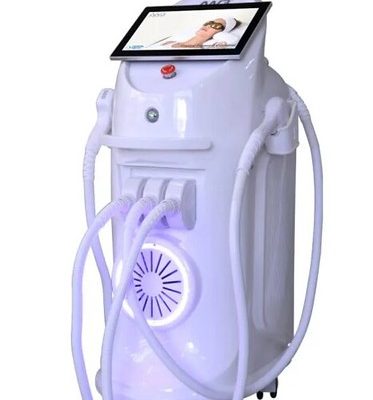Pouch Packaging Machine
Pouch packaging machines help to improve efficiency. These machines allow businesses to package more products in a shorter amount of time.
Generally, these machines come in a variety of options. They can be used for pouch insertion, coding, filling, sealing, and capping. They are ideal for liquids, powders, and pastey products.
Filling and Sealing
A pouch packaging machine is a versatile tool for packing your product. It uses the latest technology to seal and package your products. Modern machines are easy to install, commission and operate. They are also low-maintenance and require little or no special training to run them.
When the machine receives a bag, it scans its size and shape to select the proper filling Vacuum emulsifier and sealing process. Then, a deflation station removes air from the bag. This can be done manually or automatically. In addition to removing air, this process can also promote the freshness of your product and protect it from contamination. Deflation can be used for both solid and liquid products. It can even be used to perform modified atmosphere packaging (MAP) by blasting a gas-like substance into the bag and displacing oxygen.
Once the air has been removed, a sealing station presses two parts of the overlapping bag material together and welds them shut with heat. A cooling bar then passes over the sealed pouch to strengthen and flatten the seam. This process is often automated to reduce operator errors.
For liquids, a spouted filler will dispense the product through the top of the bag. This avoids spilling or spraying and allows a high product fill size for the same bag volume. It’s also ideal for soups, sauces and ready-to-drink beverages.
Cooling
Cooling is one of the most important steps on a pouch packaging machine. It reduces product damage, extends shelf life and enhances consumer appeal. It also helps preserve the integrity of the pouch seam and prevents the formation of a weak seal. The cooling process uses either constant or impulse heat sealing technology. Both methods apply a set of predetermined temperatures to the pouch seal area once the jaws of the heat sealer close.
A conveyor transports the filled and sealed pouches to a cooling station. This cooling system can be a rotary or batch type. It may have a series of fixed airflow partitions that cool each pouch, or it may be designed for specific product and application requirements. For example, the Pepe’s Chill-Flow pouch cooler has an open-throat design and gentle Hydro-Flow agitation that keeps bags safely intact while delivering fast cooling.
For liquid pouches, the cooling system can include a second heat sealing station that strengthens and flattens the seam. A cooling bar can also pass over the sealed portion of the bag to add serrations if needed. After the cooling step, the pouch is discharged into a receptacle or onto a conveyor for transport to downline equipment like check weighers, X-ray machines and case or carton packers. For converters entering the spouted pouch business, a machine that inserts spouts can be added to the line.
Injection
Manufacturer of pouch packaging machines that can be used to package a wide range of liquid, thick, and free-flowing products. These include condiments, dips, sauces, salad dressings, syrups, ketchup, cream, margarine, butter, spreads, yogurt, applesauce, desserts, ice cream, and more. They come in a variety of sizes and shapes, from flat pouches to stand-up pouches. They can also include side spouts and corner spouts. Suitable for restaurants, culinary institutions and other food processing operations.
These systems feature a film pull system that utilizes servo motors and tensioners to pull a rollstock of film into the machine. The film then passes through a printer where a date, production batch code or other information can be printed on it. After the printing, the film moves to a pouch forming station where it is overlapped to create a bag shape. This forming process can also incorporate a zipper or spout into the pouch.
After the pouch is formed, it moves to a heat sealing station where a second Automation equipment supplier heating cycle is applied to the seal area to ensure that the seam is completely sealed. Upon completion of the seal, the bag is then discharged onto a conveyor and can be transported downline to ancillary equipment like case or carton packers.
This type of machine includes detection that alerts the system if a bag has been fed incorrectly or is empty. In addition, the system can be equipped with filling apparatus such as augers or multi-head scales that drop a specific quantity of product into each bag.
Labeling
Pouch packaging machines are a popular choice for businesses because they can improve efficiency. They can reduce the time it takes to package products, and they can also help businesses save money by reducing waste. This type of machine can be used to package a variety of different items, including powders and liquids.
FFS (form fill seal) machines use a roll of film to form, fill, and seal pouches. These machines are designed to be user-friendly, and they can be configured to meet a wide range of needs. They can also be configured to print and apply labels, as well as a zip closure or slider.
Once the film is unwound, it moves to a printer, where it will be printed with information such as the date and production batch code. After printing, the film moves to the bag forming process, which overlaps the edges of the film to shape the pouch. Once the pouch is shaped, it will be sealed using sealing jaws.
A pouch packaging machine can also include a top spout, which allows end users to open the pouch and pour in their product. This option can help increase patient satisfaction and compliance, as it makes medication more convenient to take. Additionally, it can help reduce the number of people handling medications, which can decrease the risk of infection.



